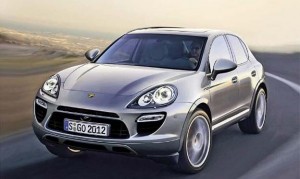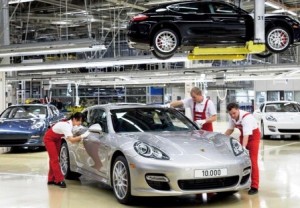With its Cayenne sport-utility vehicle now the brand’s best-selling model, Porsche is planning a hefty investment to ensure a second, smaller crossover — dubbed Cajun — gets off to a good start.
That will include a 500-million Euro investment to expand the German maker’s showcase plant in Leipzig, Germany where production of the Cajun is set to begin in late 2013 The Leipzig plant, which opened in 2002 and is something of a tourist attraction in old east Germany, is already used for building the Porsche Cayenne, the maker’s first sport-utility vehicle, as well as the four-seat Panamera sports car.
The Cajun will target a lower, more mainstream segment than Porsche’s current SUV, potentially opening up markets where the Cayenne is simply too big – as well as expensive – such as Europe. But with even U.S. buyers downsizing as fuel prices rise, the maker also sees opportunities in the States.
Wolfgang Porsche, the Chairman of the Supervisory Board of Porsche Automotive, and Matthias Müller, Chairman of the Board of Management, announced the expansion at Porsche headquarters in Stuttgart.
“We are investing another 500 million (or $685 million) in the production facility to build the Cajun in Leipzig. This is not just a mark of confidence in the manufacturing skills of our Leipzig colleagues, but also an important contribution to the economic development of the region,” said Müller, who joined the company a year ago.
The new investment will more than double the size of the Leipzig site and create more than 1,000 jobs. The Leipzig plant on which Porsche has spent $383 million or 280 million euro to date is currently home to 800 employees, It has been producing the Cayenne since 2002 and has built than 420,000 cars to date, becoming the best-selling model in the Porsche line worldwide.
The Leipzig plant is already considered one of the most environmentally friendly plants in the world sas well, being one of the world’s most efficient car factories. Technology in the plant includes an efficient air recirculation system and power cut-off in the paint shop to ensure economical energy use, Porsche official said.
The downsized crossover, which TheDetroitBureau.com previously described as the love child of a 911 and a Cayenne, will be slightly lower and shorter – but wider – than the Audi Q5, which reflects the fact they’ll share key underpinnings, much as the Porsche Cayenne has been a fraternal twin of the Volkswagen Touareg.
Key “hard points,” as industry engineers like to call them, will be shared with the Audi, notably including the firewall, roof pillars and windshield angle. But all sheet metal will be distinct to the Porsche Cajun, along with the larger, wider wheels and tires.
The interior will also be unique to Porsche, with a next-generation Boxster-derived instrument panel, sporty seats and steering wheel, among other touch points.
There’ll be some significant component sharing, however, including the Audi-based chassis, suspension, steering system and Quattro-based all-wheel-drive system. But look for distinctive Porsche touches, including optional carbon-ceramic brakes and a switchable exhaust, as well as the Sport Chrono pack.
There are three powertrains under development, starting with the 3.0-liter V6 that will be shared around the world. It is expected to turn out 290 horsepower and 295 lb-ft of torque. A Cajun Turbo S is also reportedly coming, and will use twin turbos to bump hp to around 350. The third engine, a diesel, may also come to the States, according to various reports.
Paul A. Eisenstein contributed to this report.


